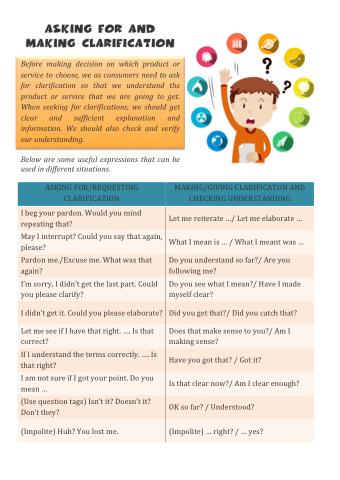Exposing the Child Sex Trafficking Crisis in Maai Mahiu, Kenya
A recent undercover investigation by BBC Africa Eye has brought to light a deeply troubling and often overlooked child sex trafficking operation thriving in Maai Mahiu, Kenya. Through discreet surveillance and comprehensive reporting, the team uncovered how organized groups-primarily led by women locally referred to as “madams”-exploit vulnerable young girls. These traffickers disguise their operations under seemingly legitimate fronts, enticing victims with false assurances of safety and employment before entrapping them in cycles of abuse.
Survivors’ harrowing accounts reveal lives overshadowed by fear and uncertainty. They describe how madams maintain dominance through psychological manipulation and intimidation while blending into their communities as respectable entrepreneurs. This dual existence complicates detection efforts and highlights the critical need for increased awareness among local populations.
Key Findings from the Investigation
- Misleading Recruitment Tactics: Children are often deceived with promises of education or jobs but are coerced into sexual exploitation instead.
- Community Involvement: Corruption or economic benefits lead some officials and residents to turn a blind eye or indirectly support these illicit activities.
- Poverty’s Role: The scarcity of educational opportunities and financial hardship make families susceptible to traffickers’ manipulative offers.
| Indicator | 2023 Data |
|---|---|
| Reported Cases in Maai Mahiu | Over 170 incidents |
| Affected Children Annually (Estimate) | More than 600 children |
| Main Victim Age Group | Ages 11-15 years old |
The statistics indicate a worrying rise compared to previous years, underscoring an urgent need for immediate action if this trend is to be reversed effectively.
The Central Role of ‘Madams’ Within Child Trafficking Networks
This investigation reveals that madams are not merely intermediaries but pivotal operators within trafficking rings. They actively recruit minors-often targeting impoverished neighborhoods-and oversee their daily exploitation. Their authority extends beyond coordination; they impose strict control over victims while facilitating transactions between clients who perpetuate demand for such abuse.
Their deep integration into local society grants them both influence and protection. This insider status enables madams to conduct operations discreetly while leveraging social connections that deter authorities or neighbors from intervening due to fear or complicity.
- Sourcing Vulnerable Youth: Madams frequently identify potential victims at schools, markets, or community gatherings where disadvantaged children congregate.
- Tactical Control Measures: They monitor victims closely, limit outside communication, enforce severe punishments for disobedience.
- Mediating Client Interactions: Madams coordinate meetings between clients seeking illegal services ensuring smooth financial exchanges.
This entrenched system illustrates why dismantling child trafficking requires targeting entire networks rather than isolated individuals alone.
Comprehensive Strategies To Combat Child Sexual Exploitation in Kenya
The distressing findings demand an urgent multi-sectoral response involving government bodies, NGOs, community leaders, and international stakeholders alike. Effective interventions should combine prevention initiatives with survivor-centered support systems such as:
- Enhanced Law Enforcement Capabilities: Establish specialized anti-trafficking units trained specifically on human trafficking cases operating within high-risk areas like Maai Mahiu.
- Culturally Tailored Awareness Campaigns: Utilize radio programs & social media platforms adapted for rural audiences educating communities on identifying trafficking signs & reporting channels effectively.
- Shelters & Rehabilitation Programs: Create secure environments offering trauma counseling alongside vocational training aimed at sustainable reintegration of survivors back into society.
- Civil Society Collaboration: Pursue partnerships between local NGOs such as Shining Hope for Communities together with global anti-trafficking coalitions enhancing resource sharing & advocacy impact.
An innovative dimension involves leveraging technology-driven solutions powered by data analytics capable of rapidly identifying emerging hotspots more efficiently than traditional approaches.
| METHODOLOGY STEP | Description |
|---|---|
| Data Collection | Gather extensive datasets on reported child trafficking cases across Kenyan counties. |
| Vulnerability Mapping | Create geospatial risk maps highlighting regions exhibiting heightened susceptibility based on socioeconomic factors. |
| Anonymous Digital Reporting Tools | Deploy mobile applications enabling citizens to submit confidential tips about suspicious activities safely. |
This tech-enabled framework supports focused interventions maximizing effectiveness while optimizing scarce grassroots resources.
Final Thoughts: Global Solidarity Coupled With Local Action Against Child Exploitation
The groundbreaking expos├® by BBC Africa Eye serves not only as a stark revelation but also a powerful call-to-action against one of Kenya’s most pressing human rights crises-the widespread sexual exploitation of children concealed within everyday life in towns like Maai Mahiu.
The uncovering of madam-led networks exposes systemic societal failures demanding coordinated efforts encompassing policy reform enforcement strengthening community empowerment-a holistic strategy vital if eradication is truly achievable.
The voices shared by survivors remind us that behind every statistic lies a stolen childhood-a future compromised yet still redeemable through empathy combined with decisive justice.
The urgency cannot be overstated: governments must enact robust protective laws NGOs require consistent funding communities need accessible awareness tools-all converging toward an unbreakable alliance against traffickers profiting from childhood innocence worldwide.







